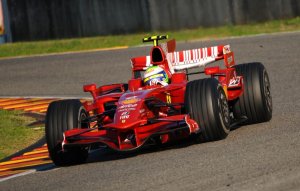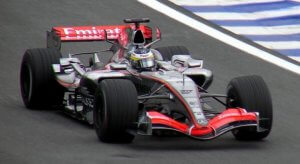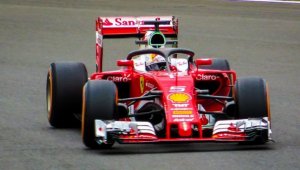How Is Formula One Different Now From Ten Years Ago?

Formula One is synonymous with innovation, that’s why it’s constantly changing. The teams strive to change and upgrade year after year, to reach the highest spot on the podium. At the same time, the FIA presents novelties for the development of the races each season. That’s why, if we look back in time, a race from ten years ago is very different from the races we watch nowadays.

For many people, Formula One has deteriorated during the last decade; you just have to look at how the audience has considerably reduced. This may be due to the changes in regulations. But, for its biggest fans, Formula One is becoming more innovative as time goes by. Far from going into a debate about this subject, we’ll analyze the changes that Formula One has experienced in the last decade so that everyone can draw their own conclusions.
Formula One changes throughout the years
Energy recovery systems
In an attempt to pollute less, while becoming more efficient, the FIA has forced teams to install different types of energy recovery systems. That’s why there’s been a tendency to reduce the engine performance during the last years, as a result, the aforementioned systems have risen in popularity:
- KERS: consisting of a battery that charges during braking and providing single-seaters with the extra power of around 70 hp for a few seconds. They can choose this option freely from behind the wheel. Teams have started to use it in Formula One races since the season of 2009.
- ERS: we could say that this Energy Recovery System is based on the principle of KERS but it has a more complex and powerful function. The ERS consists of two components, the MGU-K and the MGU-H. The first one works just like the KERS, but it provides 120 hp instead. The second one turns the gases -heat, and energy- from the engine into electric energy and it’s connected directly to the turbo.
If ten years ago, the power of single-seaters came from the engine, these recovery systems are becoming more and more important in modern racing cars. Although it may be hard to imagine, Formula One is also aware of and cares for the environment.
Tire changes
Tire-related characteristics have radically changed in the last decade as well. New types of tires and different suppliers have attempted to increase the performance on the track and increase the range of strategies. During the 2008, 2009 and 2010 seasons, Bridgestone was the only tire supplier. Nowadays, Pirelli is the tire supplier for Formula One. The changes that took place were the following:
- 2009 season: after 21 years, slick tires made a comeback since the FIA removed the ban on them.
- 2012 season: the FIA removed the ban that prohibited teams from using more than three sets of tires during free runs.
- 2016 season: Pirelli created a new compound called ultrasoft, designed especially for urban circuits.
- 2018 season: Pirelli added two new compounds, hypersoft and super-hard. The FIA also increased the maximum number of tires allowed during the race, from five to seven tires.

More safety measures
The FIA implements new safety measures each season to reduce the inherent risks that are associated with motorsports. In the last decade, there have been new safety measures that have progressively contributed to the safety on the track. Let’s analyze some of them:
- 2011 season: the safety measurements regarding the helmet and visor become much stricter to allow them to be more resistant to possible accidents. In the same season, teams were required to install clamps on the tires. This was to prevent them from bursting and harming other drivers or fans, following a crash.
- 2016 season: the top area of the cockpit was raised. This way, the sides of the driver’s head would remain covered and in the event of an impact, the levels of protection would be higher.
- 2018 season: after several years of testing, the FIA finally decided that teams should install a rollbar to single-seaters. With this safety measure, they were looking to protect the head of the driver and complement the protection of the helmet. At the same time, they wanted to avoid accidents similar to the one that happened to Felipe Massa in Hungary.
As you can see, most of the measures that the FIA has adopted during the last decade are aimed at protecting the driver’s head, since that is the most vulnerable area of their body. This tendency may continue throughout the following years until it’s ultimately replaced by closed cockpits.
Formula One is synonymous with innovation, that’s why it’s constantly changing. The teams strive to change and upgrade year after year, to reach the highest spot on the podium. At the same time, the FIA presents novelties for the development of the races each season. That’s why, if we look back in time, a race from ten years ago is very different from the races we watch nowadays.

For many people, Formula One has deteriorated during the last decade; you just have to look at how the audience has considerably reduced. This may be due to the changes in regulations. But, for its biggest fans, Formula One is becoming more innovative as time goes by. Far from going into a debate about this subject, we’ll analyze the changes that Formula One has experienced in the last decade so that everyone can draw their own conclusions.
Formula One changes throughout the years
Energy recovery systems
In an attempt to pollute less, while becoming more efficient, the FIA has forced teams to install different types of energy recovery systems. That’s why there’s been a tendency to reduce the engine performance during the last years, as a result, the aforementioned systems have risen in popularity:
- KERS: consisting of a battery that charges during braking and providing single-seaters with the extra power of around 70 hp for a few seconds. They can choose this option freely from behind the wheel. Teams have started to use it in Formula One races since the season of 2009.
- ERS: we could say that this Energy Recovery System is based on the principle of KERS but it has a more complex and powerful function. The ERS consists of two components, the MGU-K and the MGU-H. The first one works just like the KERS, but it provides 120 hp instead. The second one turns the gases -heat, and energy- from the engine into electric energy and it’s connected directly to the turbo.
If ten years ago, the power of single-seaters came from the engine, these recovery systems are becoming more and more important in modern racing cars. Although it may be hard to imagine, Formula One is also aware of and cares for the environment.
Tire changes
Tire-related characteristics have radically changed in the last decade as well. New types of tires and different suppliers have attempted to increase the performance on the track and increase the range of strategies. During the 2008, 2009 and 2010 seasons, Bridgestone was the only tire supplier. Nowadays, Pirelli is the tire supplier for Formula One. The changes that took place were the following:
- 2009 season: after 21 years, slick tires made a comeback since the FIA removed the ban on them.
- 2012 season: the FIA removed the ban that prohibited teams from using more than three sets of tires during free runs.
- 2016 season: Pirelli created a new compound called ultrasoft, designed especially for urban circuits.
- 2018 season: Pirelli added two new compounds, hypersoft and super-hard. The FIA also increased the maximum number of tires allowed during the race, from five to seven tires.

More safety measures
The FIA implements new safety measures each season to reduce the inherent risks that are associated with motorsports. In the last decade, there have been new safety measures that have progressively contributed to the safety on the track. Let’s analyze some of them:
- 2011 season: the safety measurements regarding the helmet and visor become much stricter to allow them to be more resistant to possible accidents. In the same season, teams were required to install clamps on the tires. This was to prevent them from bursting and harming other drivers or fans, following a crash.
- 2016 season: the top area of the cockpit was raised. This way, the sides of the driver’s head would remain covered and in the event of an impact, the levels of protection would be higher.
- 2018 season: after several years of testing, the FIA finally decided that teams should install a rollbar to single-seaters. With this safety measure, they were looking to protect the head of the driver and complement the protection of the helmet. At the same time, they wanted to avoid accidents similar to the one that happened to Felipe Massa in Hungary.
As you can see, most of the measures that the FIA has adopted during the last decade are aimed at protecting the driver’s head, since that is the most vulnerable area of their body. This tendency may continue throughout the following years until it’s ultimately replaced by closed cockpits.
This text is provided for informational purposes only and does not replace consultation with a professional. If in doubt, consult your specialist.








